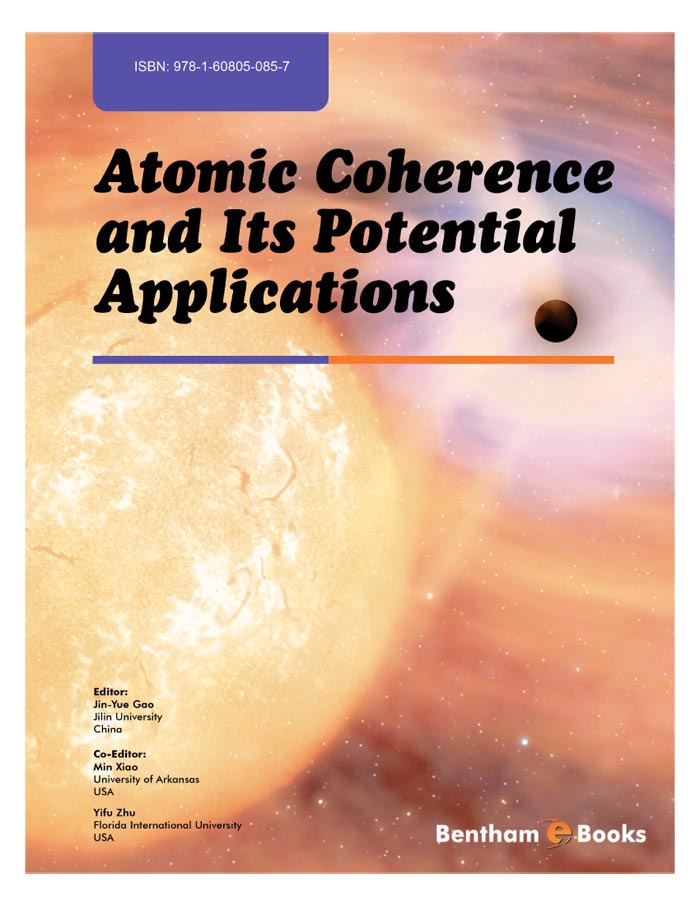Laser-induced atomic coherence and interference, and related effects in multi-level atomic and molecular systems have been actively studied in 70's and 80's as important techniques for laser spectroscopy. This field was reenergized after the first experimental demonstration of electromagnetically induced transparency (EIT) in three-level atomic gas systems about twenty years ago by the group of Professor S.E. Harris at Stanford University. Such EIT effects were later observed in atomic vapor cells with low-power diode lasers under two-photon Doppler-free configurations and in cold atoms confined in magneto-optical traps, as well as in many molecular and solid material systems. In the past twenty years, many interesting phenomena related to laser-induced atomic coherence and interference were experimentally demonstrated, such as slow and superluminal light propagations, lasing without inversion, enhanced refractive index, enhanced nonlinear optical processes, matched light pulses, optical memory, correlated/entangled photon pairs, controllable optical bistability, and cavity-QED effects. The atomic coherence effects in multi-level media have been shown to have potential applications in all-optical switching/router, logic gates, precision measurements, optical buffer/delay lines for optical communication and computing, and quantum information processing.
There have been several well-written review articles published in recent years to cover various aspects of atomic coherence and interference in multi-level systems. In this e-book, we put together reviews of several research topics related to laser-induced atomic coherence and interference, and its potential applications in atomic and solid media written by active researchers working in these fields. We hope that this e-book can serve as a good reference for graduate students and researchers interested in acquiring some general understanding and perspective of this active research field.
Chapter 1 presents experimental studies of EIT-enhanced linear and nonlinear dispersions of three-level atomic medium inside an optical cavity. By balancing the sharp linear and Kerr-nonlinear dispersions of the atomic system near the EIT resonance, the total intracavity atomic dispersion can be made to be either normal or anomalous, which leads to subluminal (slow) light propagation or superluminal (fast) light propagation in the cavity, and concomitantly, results in a narrowed or broadened cavity linewidth compared to the empty cavity case. Under certain experimental conditions, the so called "white-light cavity" can be realized with a very broad transmission spectrum, which can have applications in nonlinear precision spectroscopy and recycling cavity of the laser interferometer for the gravitational-wave detection. Chapter 2 shows that by controlling the phases between various laser beams interacting with multi-level atomic systems, phase-dependent quantum interference is induced in the atomic systems and either constructive or destructive interference can be obtained in the probe transitions. For example, when bichromatic coupling and probe fields are used in a three-level system, the interference between the resonant two-photon Raman transitions can be controlled by varying the relative phases of the coupling or probe fields. Also, when two coupling fields and two probe fields are used in a four-level double-Λ system, manipulating the relative phase among the laser beams creates interference between three-photon and one-photon excitation processes, which can be used to selectively enhance or suppress probe light absorptions. Both experimental studies and simple theoretical descriptions are presented to illustrate such phase-dependent atomic coherence effects.
In Chapter 3, several schemes for realizing atomic localization via atomic coherence and quantum interference in multi-level atomic systems are proposed, including double-dark resonance effects, subhalf-wavelength localization via two standing-wave fields, and two-dimensional localization by using two orthogonal standing-wave fields. Using double-dark resonances, the detecting probability and localization precision for the atoms can be greatly enhanced. Also, using standing-wave fields in ladder-type system can improve the detecting probability and lead to sub-half-wavelength localization precision in two-dimension, which provides potential applications in two-dimensional nano-lithograph.
Chapter 4 presents some recent theoretical studies on quantum correlation and entanglement properties of the four-wave mixing and quantum-beat laser systems in multi-level atomic systems. The four-wave mixing can yield Einstein-Podolsky-Rosen (EPR) entangled states by simultaneously absorbing in the excitations from a pair of squeeze-transformed modes, and the quantum-beat laserscan act as bright sources of entangled light beams with sub-Poissonian photon statistics.
Chapter 5 describes few techniques to generate and tune the photonic bandgaps of the gratings written
by standing-wave fields in coherent media such as cold rubidium atoms, Pr3+: Y2SiO4, and diamond
containing N-V color centers. Both steady and dynamic optical responses of the media exhibiting
induced photonic bandgaps have been theoretically examined in terms of transmitted and reflected
spectra or pulse propagation dynamics. The standing-wave driving configuration is shown to be an
efficient technique to control light flows and optical nonlinearities with spatially periodic quantum
coherence, which may be exploited to achieve all optical switching, router, and storage and thus has
potential applications in quantum information processing. Chapter 6 shows several experimental
demonstrations of light storage based on atomic coherence and atomic coherence transfer. By
preparing maximal atomic coherence in the coherently-driven media, light storage based on F-STIRAP
is realized in atomic vapor and solid-state crystal respectively. Some applications of EIT-based
light storage in solid Pr3++:Y2SiO5 crystal are studied experimentally. Also, by employing STIRAP process, atomic coherence transfer between different spin levels is proposed theoretically and
demonstrated experimentally.
As one can see that this e-book has covered a broad spectrum of research topics from experimental demonstrations of EIT-related effects (such as cavity linewidth modification, phase-dependent interference, and optical storage) to several interesting theoretical predictions (e.g. localization of atoms, quantum correlation, and tunable photonic bandgaps). Also, in the experimental demonstrations of atomic coherence effects, different multi-level media, such as hot atomic cell in an optical cavity (Chapter 1), cold atoms in the magneto-optical trap (Chapter 2), and solid crystal at low temperature (Chapter 6), are used, which show the broad applicability of atomic coherence effects and their potential applications.
Editor
Jinyue Gao
Co-editors
Min Xiao & Yifu Zhu

